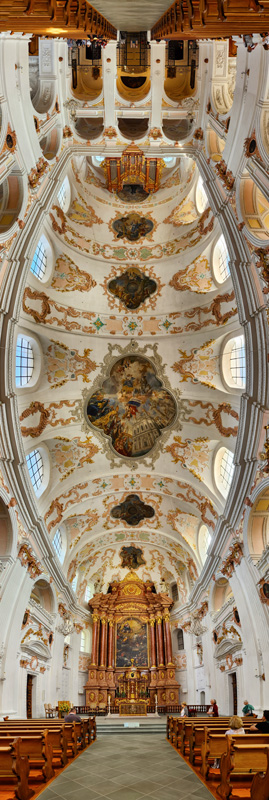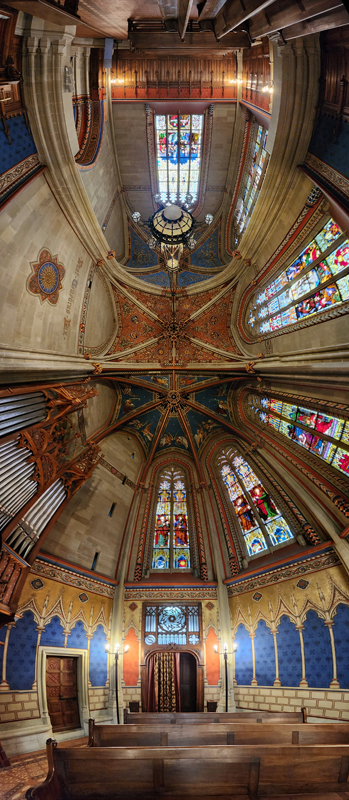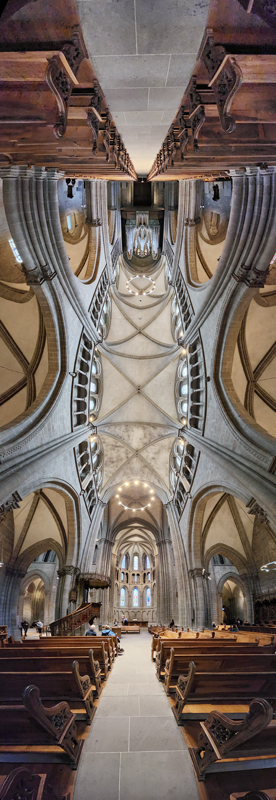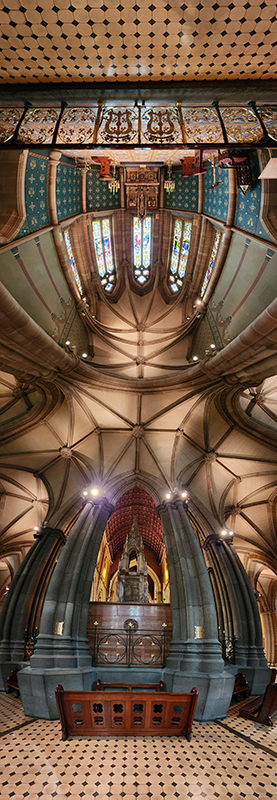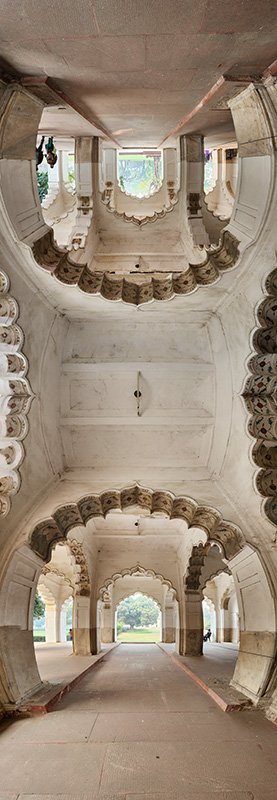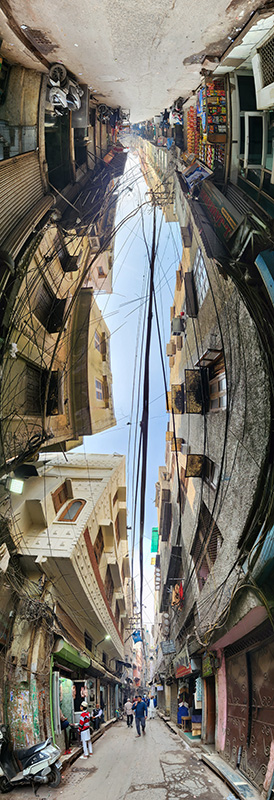Vertical Panoramas, also known as the "vertorama"Written by Paul BourkeSeptember 2023
The notion of a cylindrical panorama is not new, in the following a slight variation is introduced that suits certain environments. Specifically, a vertical cylindrical panorama where the rotation axis for the panorama is horizontal rather than vertical as is the case for a horizontal panorama. An example of when this might be more interesting than a horizontal panorama is illustrated in the images below, the presentation of ceilings in cathedrals. Other use cases might be for tall thin objects.
The above were captured by taking a number of photographs of increasing vertical angle (latitude) and stitching them together using traditional panorama stitching software. As per any stitching process the quality can depend on how close the rotation of the camera is to the zero parallax position for the camera/lens. The panorama is not 360 degrees vertically since the south pole was skipped due to it being a hand held series of photographs and the presence of the photographers feet, this can be readily overcome if desired using a more careful approach. The vertical field of view is ultimately limited to 360 degrees. For recording tall thin objects the vertical field of view may only need to be 90 degrees. As per traditional panoramas there are two fields of view of interest. The horizontal field of view (vertical in a traditional panorama) is limited to the field of view of the camera for a single pass, but multiple strips can be captured and stitched together for wider fields of view. The maximum horizontal field of view is 180 degrees but for practical purposes is limited to about 140 degrees. At the time of writing the panorama mode in some mobile devices can do this, although navigating from the forward direction to much past directly upwards can be challenging. Another approach is to use a rotating video recording and forming the vertical panorama using slit-scan methods. Of course one can create a vertical panorama from a full equirectangular image by simply extracting a cylindrical panorama orientated vertically. In the following example the authors sphere2pano was used, the horizontal field of view is adjustable, here it is 90 degrees. 
In the above example, because care was taken to record the south pole in the source equirectangu;ar image, one can create the cylindrical panorama that is 360 degrees vertically.
|
